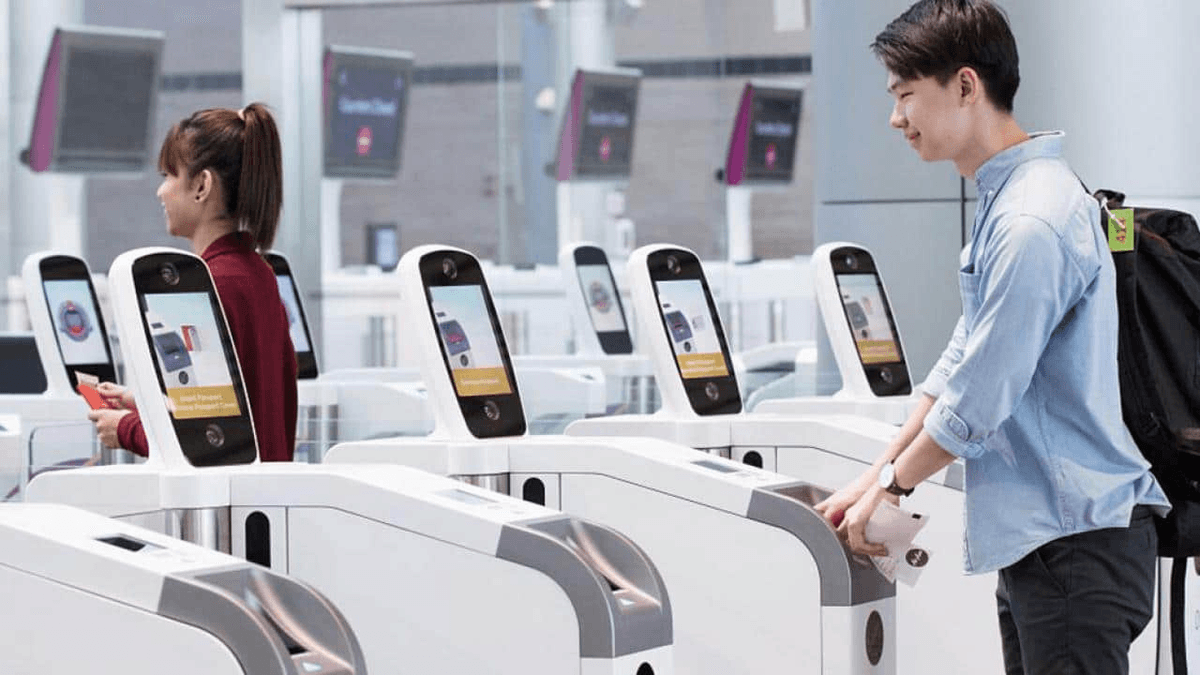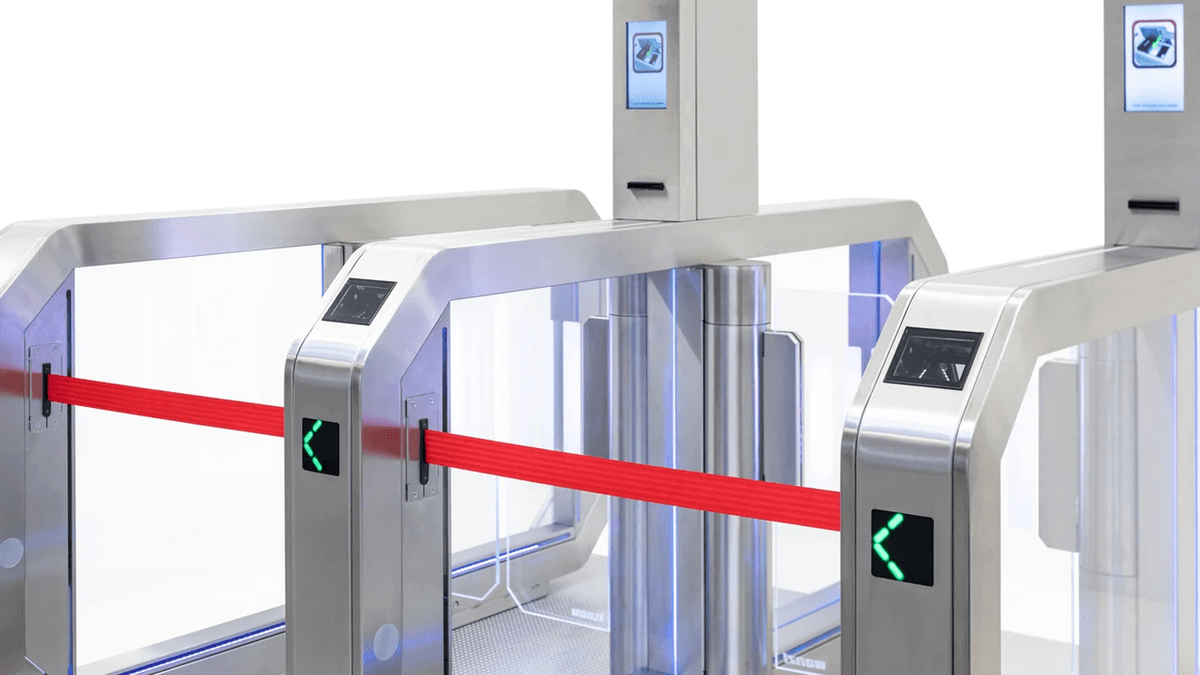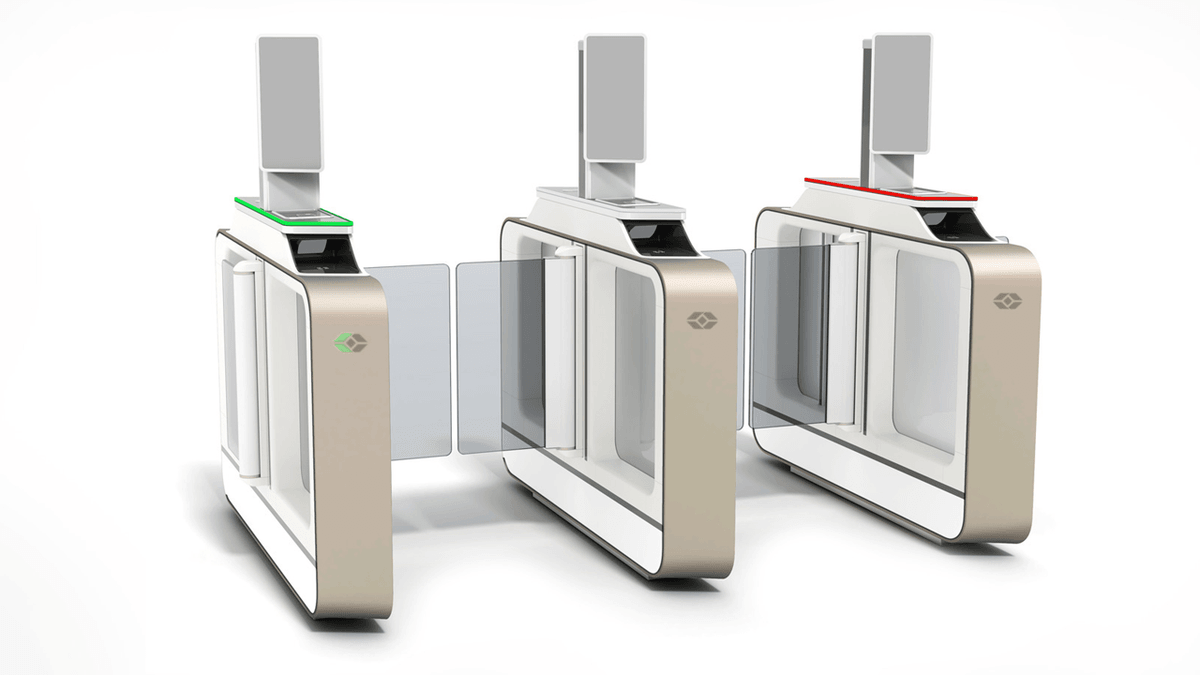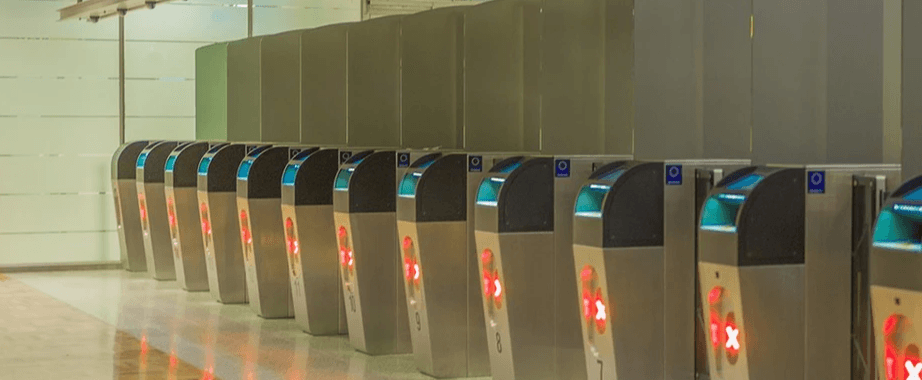The Self-Service Security Gate is revolutionizing airport security by introducing automated checks that streamline the screening process while maintaining rigorous safety standards. These innovative systems allow passengers to navigate security checkpoints with greater efficiency, reducing wait times and enhancing the overall travel experience without compromising on security.
Airport security is a critical aspect of air travel, ensuring the safety of passengers, crew, and aircraft. Traditional security checkpoints, while effective, often suffer from long queues, human error, and varying levels of efficiency. The Self-Service Security Gate addresses these challenges by leveraging advanced technology to automate key aspects of the screening process. From identity verification to baggage inspection, these gates are designed to handle multiple security checks simultaneously, providing a seamless and secure journey for passengers. In this comprehensive blog post, we will explore the various components, benefits, implementation strategies, and future trends of the Self-Service Security Gate, highlighting its role in transforming airport security.
The Evolution of Airport Security and the Role of Self-Service Security Gate
Airport security has undergone significant transformations over the years, driven by evolving threats, technological advancements, and the need to balance safety with passenger convenience. From manual bag checks and identity verification to the introduction of X-ray machines and metal detectors, each innovation has aimed to enhance security while improving efficiency. The Self-Service Security Gate represents the next step in this evolution, integrating cutting-edge technology to automate and optimize the security process.

Before the advent of self-service solutions, airport security relied heavily on manual labor. Security personnel would check passengers' IDs, inspect baggage, and perform pat-downs, a process that was time-consuming and prone to human error. As air travel volumes increased, these traditional methods struggled to keep up, leading to long wait times and frustrated passengers. The Self-Service Security Gate was developed to address these issues, combining automation with advanced sensors and artificial intelligence (AI) to create a more efficient and reliable security system.
The Self-Service Security Gate plays a pivotal role in modern airport security by taking over repetitive and time-consuming tasks, allowing security personnel to focus on more complex security threats. For example, these gates can automatically verify a passenger's identity by comparing their facial features with the photo on their passport or boarding pass, a process that is both faster and more accurate than manual checks. They can also scan baggage for prohibited items using advanced imaging technology, alerting security staff only when a potential threat is detected. This not only speeds up the screening process but also reduces the likelihood of false alarms, making the entire security operation more efficient.
How Self-Service Security Gate Works: A Step-by-Step Overview
The Self-Service Security Gate operates through a series of integrated steps that combine identity verification, baggage screening, and passenger screening to ensure comprehensive security. Here is a detailed breakdown of how these gates work:
- Check-In and Identity Verification: The process begins when a passenger approaches the Self-Service Security Gate. They are prompted to insert their boarding pass (either physical or digital) into a scanner and place their passport or ID on a designated reader. The gate then uses optical character recognition (OCR) to extract information from these documents and compares it with the passenger's facial features using facial recognition technology. This biometric verification ensures that the passenger is who they claim to be, preventing identity fraud and unauthorized access.
- Baggage Placement and Screening: While the identity verification is taking place, the passenger is instructed to place their carry-on baggage on a conveyor belt that feeds into an X-ray scanner integrated with the Self-Service Security Gate. The X-ray scanner uses advanced imaging technology to create a detailed image of the baggage's contents, which is analyzed by AI algorithms to detect prohibited items such as weapons, explosives, or liquids in excess of the allowed limit. The AI can distinguish between different materials and objects, flagging any items that require further inspection.
- Passenger Screening: Simultaneously with baggage screening, the passenger steps into the Self-Service Security Gate's screening area. Here, they are scanned using millimeter-wave technology or backscatter X-rays, which create a detailed image of the passenger's body to detect hidden objects. Unlike traditional metal detectors, these advanced scanners can detect non-metallic items such as plastic weapons or explosives. The scanning process is quick, taking only a few seconds, and the images are automatically analyzed by AI to identify any anomalies.
- Clearance or Further Inspection: If both the passenger and their baggage pass the screening checks, the Self-Service Security Gate opens, allowing the passenger to proceed to the departure area. If any issues are detected—such as a prohibited item in the baggage or an unknown object on the passenger—the gate remains closed, and an alert is sent to security personnel. The passenger is then directed to a secondary inspection area, where a security officer can conduct a more thorough check. This ensures that any potential threats are addressed while minimizing disruption to other passengers.
- Data Recording and Reporting: Throughout the process, the Self-Service Security Gate records data such as the passenger's identity, screening results, and timestamp. This data is stored securely and can be accessed by security personnel for auditing purposes or in the event of an investigation. The gate also generates reports on screening efficiency, including the number of passengers processed, the number of alerts triggered, and average processing time, helping airports optimize their security operations.

Key Features of Self-Service Security Gate
The Self-Service Security Gate is equipped with a range of advanced features that make it an effective and efficient security solution for airports. These features include:
- Biometric Identification: The integration of facial recognition, fingerprint scanning, or iris recognition technology allows for accurate and fast identity verification. This feature ensures that only authorized passengers are allowed through the gate, reducing the risk of identity fraud.
- Advanced Imaging Technology: X-ray scanners for baggage and millimeter-wave or backscatter scanners for passengers provide high-resolution images that can detect even small or non-metallic prohibited items. These scanners are designed to be safe for passengers, emitting minimal radiation.
- Artificial Intelligence and Machine Learning: AI algorithms analyze the images from the scanners, distinguishing between harmless items and potential threats. Machine learning allows the system to improve over time, adapting to new types of threats and reducing false alarms.
- User-Friendly Interface: The Self-Service Security Gate features clear instructions, both visual and audio, to guide passengers through the screening process. This reduces confusion and ensures that passengers complete each step correctly, minimizing delays.
- Integration with Airport Systems: These gates can be integrated with other airport systems, such as flight information displays, passenger databases, and security management software. This allows for seamless data sharing and coordination between different parts of the airport, improving overall operational efficiency.
- Modular Design: Self-Service Security Gates are often designed with a modular approach, allowing airports to customize the system based on their specific needs. For example, additional scanners or verification stations can be added to handle peak passenger volumes.
- Accessibility Features: To accommodate passengers with disabilities, the Self-Service Security Gate includes features such as wheelchair-accessible lanes, audio instructions for the visually impaired, and simplified interfaces for those with cognitive disabilities.
- Real-Time Monitoring and Alerts: Security personnel can monitor the Self-Service Security Gate in real-time through a central dashboard. The system sends instant alerts when a potential threat is detected, allowing for quick response and intervention.
- Data Security and Privacy: The Self-Service Security Gate is designed to protect passenger data, with encryption and secure storage protocols in place. Compliance with data protection regulations, such as the General Data Protection Regulation (GDPR), ensures that passenger privacy is maintained.

Benefits of Implementing Self-Service Security Gate in Airports
The implementation of Self-Service Security Gate in airports offers a wide range of benefits for passengers, airlines, and airport operators. These benefits include:
- Reduced Wait Times: One of the most significant advantages of the Self-Service Security Gate is the reduction in wait times at security checkpoints. By automating identity verification and screening processes, these gates can process passengers much faster than traditional manual checks. This is particularly beneficial during peak travel times, when long queues can cause missed flights and passenger frustration.
- Improved Security Accuracy: The advanced technology used in Self-Service Security Gate, such as AI-powered image analysis and biometric identification, reduces the risk of human error. This ensures that prohibited items and potential threats are detected more consistently, enhancing overall airport security.
- Enhanced Passenger Experience: The streamlined process of the Self-Service Security Gate makes the security checkpoint less stressful for passengers. Clear instructions, faster processing, and reduced interaction with security personnel create a more pleasant travel experience, increasing passenger satisfaction.
- Optimized Use of Security Personnel: By automating routine tasks, the Self-Service Security Gate allows security personnel to focus on more critical roles, such as responding to alerts and conducting secondary inspections. This improves the efficiency of the security team and ensures that resources are allocated where they are most needed.
- Cost Savings: While the initial investment in Self-Service Security Gate is significant, the long-term cost savings are substantial. Reduced labor costs, improved efficiency, and lower operational expenses (such as fewer false alarms requiring manual checks) make these gates a cost-effective solution for airports.
- Scalability: The modular design of Self-Service Security Gate allows airports to easily scale their security operations to meet changing passenger volumes. Additional gates can be added during peak seasons, and the system can be adjusted to handle new types of threats or regulatory requirements.
- Data-Driven Insights: The data collected by the Self-Service Security Gate provides valuable insights into security operations. Airports can analyze this data to identify bottlenecks, optimize staffing levels, and improve the overall efficiency of the security process.
- Compliance with Regulations: Self-Service Security Gate is designed to meet or exceed international security regulations, such as those set by the International Civil Aviation Organization (ICAO) and the Transportation Security Administration (TSA). This ensures that airports remain compliant with all relevant standards, reducing the risk of penalties or sanctions.
Implementation Considerations for Self-Service Security Gate
Implementing Self-Service Security Gate in an airport requires careful planning and consideration of various factors to ensure a successful deployment. Here are some key considerations:
- Airport Layout and Space Requirements: Self-Service Security Gate requires a certain amount of space for installation, including room for the gate itself, baggage scanners, and passenger queuing areas. Airports must assess their existing infrastructure to determine if modifications are needed to accommodate the gates. This may involve rearranging existing security checkpoints, expanding the terminal, or redesigning the flow of passenger traffic.
- Integration with Existing Systems: The Self-Service Security Gate must be integrated with the airport's existing systems, such as passenger databases, flight information systems, and security management software. This requires compatibility between different technologies and may involve working with multiple vendors to ensure seamless data exchange.
- Staff Training: While the Self-Service Security Gate is automated, security personnel and airport staff require training to operate and maintain the system. This includes training on how to monitor the gates, respond to alerts, and assist passengers who may have difficulty using the self-service features. Training programs should be comprehensive and ongoing to ensure that staff are familiar with any updates or changes to the system.
- Passenger Education: Passengers may be unfamiliar with the Self-Service Security Gate, so airports must provide clear instructions and education to help them navigate the process. This can include signage, video tutorials, and staff stationed near the gates to assist with any questions or issues. Educating passengers helps to reduce confusion and ensure that the screening process runs smoothly.
- Regulatory Approval: Before implementing the Self-Service Security Gate, airports must obtain approval from relevant regulatory authorities. This involves demonstrating that the system meets all security standards and privacy regulations. The approval process can be time-consuming, so airports should plan accordingly and work closely with regulators to address any concerns.
- Cost and Budgeting: The cost of implementing Self-Service Security Gate includes the purchase of equipment, installation, integration with existing systems, training, and ongoing maintenance. Airports must develop a detailed budget and explore funding options, such as grants or partnerships with airlines, to cover these costs. It is also important to consider the long-term return on investment, including cost savings and improved efficiency.
- Testing and Piloting: Before full deployment, airports should conduct a pilot program with the Self-Service Security Gate to identify any issues or areas for improvement. This can involve testing the system with a small group of passengers, monitoring performance, and gathering feedback from both passengers and staff. Based on the results of the pilot, adjustments can be made to the system or processes to ensure a successful full-scale implementation.

Maintenance and Support for Self-Service Security Gate
To ensure that the Self-Service Security Gate continues to operate effectively and reliably, regular maintenance and support are essential. Here are some key aspects of maintaining these systems:
- Preventive Maintenance: Regular preventive maintenance is crucial to keep the Self-Service Security Gate in good working order. This includes inspecting and cleaning the scanners, checking the hardware and software for any issues, and replacing worn or damaged components. Preventive maintenance should be scheduled on a regular basis, such as monthly or quarterly, to prevent breakdowns and ensure optimal performance.
- Software Updates and Upgrades: The software that powers the Self-Service Security Gate, including the AI algorithms and user interface, requires regular updates to address security vulnerabilities, improve performance, and add new features. These updates should be installed promptly to ensure that the system remains up-to-date and effective. In addition, periodic hardware upgrades may be necessary to keep up with technological advancements and changing security requirements.
- Technical Support: A reliable technical support team is essential for addressing any issues that may arise with the Self-Service Security Gate. This team should be available 24/7 to provide assistance, either remotely or on-site. Quick response times are critical to minimizing downtime and ensuring that the security checkpoint remains operational.
- Troubleshooting and Repairs: Despite preventive maintenance, problems can still occur with the Self-Service Security Gate. The technical support team should be trained to troubleshoot common issues, such as scanner malfunctions or software errors, and perform repairs as needed. In cases where replacement parts are required, a reliable supply chain should be in place to ensure that parts are available quickly.
- Performance Monitoring: The performance of the Self-Service Security Gate should be monitored continuously to identify any trends or patterns that may indicate a problem. This can include tracking metrics such as processing time, error rates, and the number of alerts triggered. By analyzing this data, maintenance teams can proactively address issues before they lead to system failures.
- Training for Maintenance Staff: Maintenance staff responsible for the Self-Service Security Gate should receive specialized training to ensure that they have the knowledge and skills to perform their duties effectively. This includes training on the system's hardware and software, as well as safety procedures for working with the equipment.
Security and Privacy Considerations for Self-Service Security Gate
While the Self-Service Security Gate enhances airport security, it also raises important considerations regarding security and privacy. Here are some key issues and how they can be addressed:

- Data Security: The Self-Service Security Gate collects and stores sensitive passenger data, including biometric information such as facial scans and ID details. It is essential to protect this data from unauthorized access, theft, or misuse. This can be achieved through encryption, secure storage protocols, and access controls that limit who can view or modify the data. Regular security audits should also be conducted to identify and address any vulnerabilities.
- Privacy Protection: The use of biometric technology in the Self-Service Security Gate raises privacy concerns, as passengers may be uncomfortable with their personal data being collected and stored. To address this, airports should be transparent about how passenger data is collected, used, and retained. They should also comply with data protection regulations, such as GDPR, which require obtaining passenger consent (where necessary) and limiting the storage of data to the minimum time required.
- Cybersecurity Threats: Like any connected system, the Self-Service Security Gate is vulnerable to cybersecurity threats, such as hacking or malware attacks. To mitigate this risk, the system should be protected with firewalls, antivirus software, and other cybersecurity measures. Regular security updates and patches should be applied to address new threats, and staff should be trained to recognize and report potential cybersecurity incidents.
- Accuracy and Bias in Biometrics: Facial recognition and other biometric technologies used in the Self-Service Security Gate may have accuracy issues, particularly with certain demographics, such as people of color or the elderly. This can lead to false rejections or incorrect identifications, which can be frustrating for passengers and potentially compromise security. To address this, the system should be tested with diverse populations to ensure accuracy and fairness, and ongoing monitoring should be conducted to identify and correct any biases.
- Transparency and Accountability: Airports should be transparent about the operation of the Self-Service Security Gate, including how decisions are made by the AI algorithms and how passenger data is used. They should also establish clear accountability mechanisms, so that passengers have recourse if they believe their privacy or security has been compromised.
Common Challenges in Self-Service Security Gate Operations
Despite their many benefits, Self-Service Security Gates face several challenges in their day-to-day operations. These challenges include:

- Technical Glitches: Like any complex technology, the Self-Service Security Gate can experience technical glitches, such as software errors, scanner malfunctions, or connectivity issues. These glitches can cause delays, frustration for passengers, and the need for manual intervention by security staff.
- Passenger Resistance or Confusion: Some passengers may be resistant to using the Self-Service Security Gate, either due to unfamiliarity with the technology or concerns about privacy. Others may struggle to follow the instructions, leading to errors in the screening process and delays.
- False Alarms: While the AI algorithms in the Self-Service Security Gate are designed to reduce false alarms, they are not perfect. False alarms can occur due to harmless items in baggage or clothing, leading to unnecessary secondary inspections and delays.
- Adapting to New Threats: As new types of threats emerge, the Self-Service Security Gate must be updated to detect them. This requires regular software updates and, in some cases, hardware upgrades, which can be time-consuming and costly.
- Integration with Legacy Systems: Many airports have legacy security systems that may not be compatible with the Self-Service Security Gate. Integrating these systems can be challenging, requiring custom software development or the replacement of existing infrastructure.
Strategies to Overcome Self-Service Security Gate Challenges
Addressing the challenges faced by Self-Service Security Gate operations requires a proactive and strategic approach. Here are some effective strategies:
- Invest in Reliable Technology: Choosing high-quality, reliable Self-Service Security Gate systems from reputable manufacturers can reduce the risk of technical glitches. It is also important to ensure that the system is regularly updated with the latest software and firmware to address known issues and improve performance. Working with manufacturers that offer reliable technical support and warranty coverage can also help to minimize the impact of technical problems.
- Enhance Passenger Education and Support: To reduce passenger resistance and confusion, airports should invest in comprehensive passenger education campaigns. This can include pre-travel information on airport websites and mobile apps, explaining how the Self-Service Security Gate works and what passengers need to do to prepare. Signage at the security checkpoint should be clear and easy to understand, with step-by-step instructions and visual aids. Additionally, stationing helpful staff near the gates to assist passengers with questions or difficulties can go a long way in ensuring a smooth process.
- Optimize AI Algorithms to Reduce False Alarms: Collaborating with technology providers to continuously refine the AI algorithms used in the Self-Service Security Gate can help to reduce false alarms. This involves analyzing data from previous screenings to identify patterns in false alarms and adjusting the algorithms accordingly. Regular testing with a wide range of items and passenger scenarios can also help to improve the accuracy of threat detection, minimizing unnecessary secondary inspections.
- Establish a Flexible Update Process: To keep up with new threats, airports should establish a flexible process for updating the Self-Service Security Gate's software and hardware. This includes working with manufacturers to develop rapid update protocols, ensuring that new threat definitions can be deployed quickly. Investing in modular hardware that allows for easy upgrades, such as swapping out scanners or adding new sensors, can also help to adapt to evolving security needs without replacing the entire system.
- Plan for System Integration Early: When implementing the Self-Service Security Gate, airports should plan for integration with legacy systems from the outset. This may involve conducting a thorough assessment of existing systems to identify compatibility issues and working with vendors to develop custom integration solutions. In some cases, it may be necessary to phase out older systems gradually to ensure a smooth transition. Engaging with IT specialists who have experience in airport security systems can help to navigate the complexities of integration.
Case Studies: Successful Implementation of Self-Service Security Gate
Real-world examples demonstrate the effectiveness of Self-Service Security Gate in enhancing airport security and improving passenger experience. Here are a few notable case studies:
- Regional Airport: A mid-sized regional airport with limited security staff was looking for a way to improve efficiency without compromising security. It deployed a small number of Self-Service Security Gates, focusing on peak travel times. The gates allowed the airport to process 50% more passengers during busy periods with the same number of staff. Passengers appreciated the faster process, and the airport saw a reduction in missed flights. The modular design of the gates also allowed the airport to easily add more units as passenger numbers grew.
- European Airport: A European airport prioritizing passenger privacy and data security implemented Self-Service Security Gates with advanced data protection features. The system was designed to store biometric data only temporarily, with automatic deletion after the screening process was complete. It also allowed passengers to opt out of facial recognition, using alternative identity verification methods instead. Despite these privacy measures, the gates maintained high security standards and reduced wait times by 35%. The airport's transparent approach to data usage helped to build passenger trust, with over 80% of passengers reporting positive experiences with the Self-Service Security Gate.
Future Trends in Self-Service Security Gate Technology
The future of Self-Service Security Gate is shaped by ongoing technological advancements and evolving security needs. Here are some key trends to watch:
- Enhanced Biometrics: Future Self-Service Security Gates will likely incorporate more advanced biometric technologies, such as multi-modal biometrics that combine facial recognition with fingerprint or iris scanning. This will improve identity verification accuracy and reduce the risk of fraud, as it is harder to spoof multiple biometric markers.
- Artificial Intelligence and Machine Learning Advancements: AI algorithms will become more sophisticated, with the ability to detect even more subtle threats and adapt to new types of prohibited items in real-time. Machine learning models will be trained on larger and more diverse datasets, improving accuracy and reducing false alarms further. Predictive analytics may also be integrated, allowing the system to anticipate potential issues and adjust screening parameters accordingly.
- Increased Automation and Autonomy: Self-Service Security Gates will become more automated, with minimal human intervention required. This could include autonomous baggage handling, where the gate's conveyor system automatically sorts and routes bags for additional screening if needed. Some gates may even feature robotic arms to assist with inspecting suspicious items, reducing the need for security personnel to handle potentially dangerous objects.
- Improved Passenger Experience Features: To further enhance the passenger experience, future Self-Service Security Gates may include features such as personalized instructions based on passenger type (e.g., families with children, elderly passengers), faster screening times through improved sensor technology, and integration with mobile apps to allow passengers to pre-register biometric data and speed up the verification process.
- Enhanced Cybersecurity: As Self-Service Security Gates become more connected, cybersecurity will be a top priority. Future systems will incorporate advanced encryption techniques, blockchain technology for secure data storage, and AI-powered threat detection to identify and prevent cyberattacks in real-time.
- Sustainability Features: Manufacturers will likely focus on making Self-Service Security Gates more energy-efficient, with features such as low-power sensors, energy-saving modes during off-peak hours, and the use of recycled materials in construction. This aligns with airports' growing focus on sustainability and reducing their environmental impact.
Choosing the Right Self-Service Security Gate Provider
Selecting the right provider is crucial for the successful implementation and operation of Self-Service Security Gate. Here are key factors to consider when choosing a provider:
- Experience and Expertise: Look for providers with extensive experience in developing and deploying Self-Service Security Gates in airport environments. They should have a deep understanding of aviation security regulations and requirements, as well as a proven track record of delivering reliable, high-performance systems.
- Technology Innovation: Choose a provider that is committed to innovation and investing in research and development. This ensures that the Self-Service Security Gate you implement will incorporate the latest technologies and remain effective as security threats evolve. Ask about their roadmap for future enhancements and how they plan to address emerging challenges.
- Customization Capabilities: Every airport has unique needs and requirements, so the provider should offer customization options to tailor the Self-Service Security Gate to your specific environment. This includes adapting the system to your airport's layout, integrating with existing systems, and adding features to meet special requirements (e.g., accessibility for passengers with disabilities).
- Technical Support and Maintenance: A reliable provider should offer comprehensive technical support and maintenance services, including 24/7 support, on-site repairs, and regular software updates. They should have a network of trained technicians available to respond quickly to issues, minimizing downtime. Ask about their service level agreements (SLAs) to ensure they can meet your needs.
- Compliance with Regulations: Ensure that the provider's Self-Service Security Gate meets all relevant security and privacy regulations, such as those set by ICAO, TSA, and GDPR. They should be able to provide documentation demonstrating compliance and have a process in place to adapt to new regulations as they are introduced.
- Cost and Value: While cost is an important factor, it should not be the sole consideration. Evaluate the total cost of ownership, including installation, training, maintenance, and upgrades, rather than just the upfront purchase price. A higher-quality system may have a higher initial cost but offer better performance, reliability, and long-term value.
- Customer References: Request references from other airports that have implemented the provider's Self-Service Security Gate. Contact these references to learn about their experiences with the system, including performance, reliability, and customer support. This can provide valuable insights into the provider's capabilities and the system's real-world performance.

Conclusion: Self-Service Security Gate as a Pillar of Modern Airport Security
The Self-Service Security Gate has emerged as a transformative technology in airport security, offering a powerful combination of enhanced efficiency, improved security accuracy, and a better passenger experience. By automating key aspects of the screening process, these gates address the limitations of traditional manual checks, reducing wait times, minimizing human error, and allowing security personnel to focus on more critical tasks.
While challenges such as technical glitches, passenger confusion, and evolving threats exist, they can be overcome with strategic planning, investment in reliable technology, and a focus on continuous improvement. The case studies highlighted demonstrate that when implemented correctly, Self-Service Security Gate can deliver significant benefits for airports of all sizes.
Looking to the future, ongoing advancements in biometrics, AI, and automation will further enhance the capabilities of Self-Service Security Gate, making them even more effective at detecting threats and improving the passenger experience. By choosing the right provider and staying ahead of technological trends, airports can ensure that their security operations remain at the forefront of innovation.
In an era where air travel continues to grow and security threats evolve, the Self-Service Security Gate is not just a convenience but a necessity. It represents a critical step forward in creating safer, more efficient, and more passenger-friendly airports, ensuring that air travel remains a secure and enjoyable experience for all.
